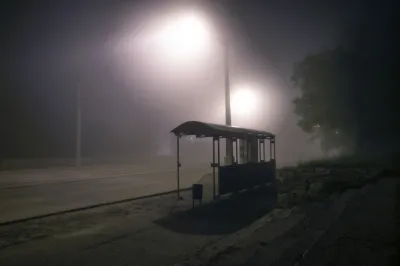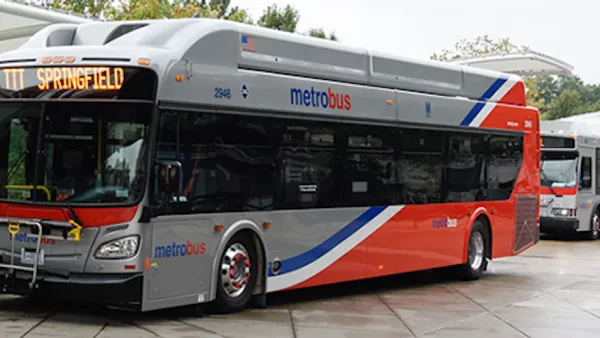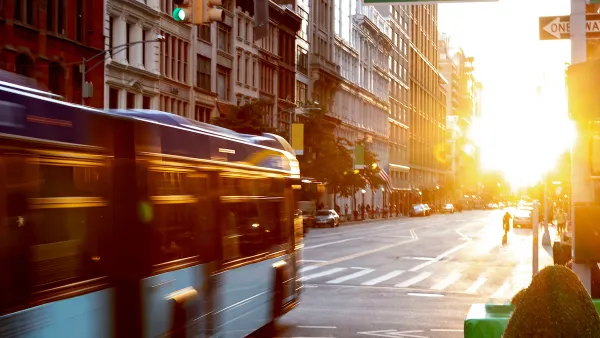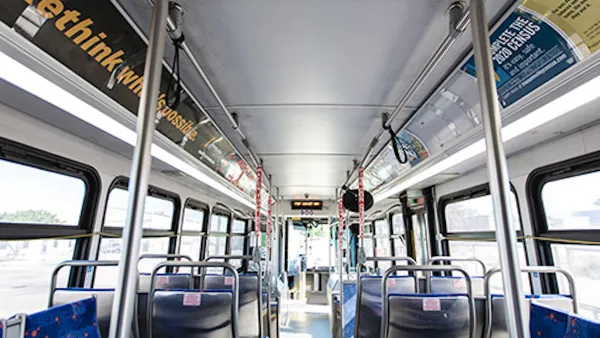Operator shortages are causing transit agencies to cut service unpredictably, leaving riders waiting for ‘ghost buses.’

A blog post from Transit Center explains the phenomenon of “ghost buses,” buses that appear on smartphone apps as minutes away only to never materialize at the station.
“What’s behind this alarming rise in ghost buses? Amid a national shortfall of transit operators, years in the making and worsened by the pandemic, there simply aren’t enough bus operators to run all the trips that transit agencies schedule.” In Los Angeles, the county’s transit agency canceled 1 in 6 trips in January of this year due to a shortage of 600 operators.
There are technical challenges to tracking ghost buses, for riders and agencies alike. Transponders aboard en-route buses share their locations via GPS, feeding real-time arrival boards and trip-planning apps. Canceled trips don’t generate GPS locations, so apps reference and display scheduled arrival data instead. This misleads riders into thinking their bus is running when it’s not.
The blog post recommends that transit agencies begin by tracking and publishing canceled buses to provide more transparency and identify solutions. “Agencies also need to be realistic about the amount of service they can provide with the labor force they have, and adjust schedules accordingly.”
The root of the problem, the blog post cautions, is the structural problems leading to the operator shortage. Transit agencies “must radically improve the job for operators by raising pay and improving working conditions. They must also attract new operators by offering signing bonuses and addressing roadblocks to starting the job, like long waits to receive commercial drivers’ licenses and unnecessarily strict drug testing.”
FULL STORY: Ghost Buses are Haunting Riders Across America

National Parks Layoffs Will Cause Communities to Lose Billions
Thousands of essential park workers were laid off this week, just before the busy spring break season.

Retro-silient?: America’s First “Eco-burb,” The Woodlands Turns 50
A master-planned community north of Houston offers lessons on green infrastructure and resilient design, but falls short of its founder’s lofty affordability and walkability goals.

Delivering for America Plan Will Downgrade Mail Service in at Least 49.5 Percent of Zip Codes
Republican and Democrat lawmakers criticize the plan for its disproportionate negative impact on rural communities.

Test News Post 1
This is a summary

Test News Headline 46
Test for the image on the front page.

Balancing Bombs and Butterflies: How the National Guard Protects a Rare Species
The National Guard at Fort Indiantown Gap uses GIS technology and land management strategies to balance military training with conservation efforts, ensuring the survival of the rare eastern regal fritillary butterfly.
Urban Design for Planners 1: Software Tools
This six-course series explores essential urban design concepts using open source software and equips planners with the tools they need to participate fully in the urban design process.
Planning for Universal Design
Learn the tools for implementing Universal Design in planning regulations.
EMC Planning Group, Inc.
Planetizen
Planetizen
Mpact (formerly Rail~Volution)
Great Falls Development Authority, Inc.
HUDs Office of Policy Development and Research
NYU Wagner Graduate School of Public Service





























